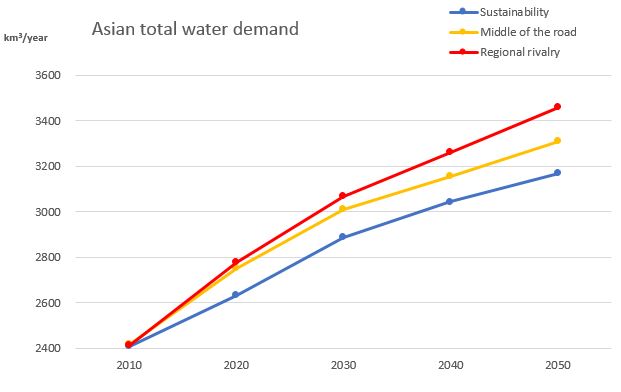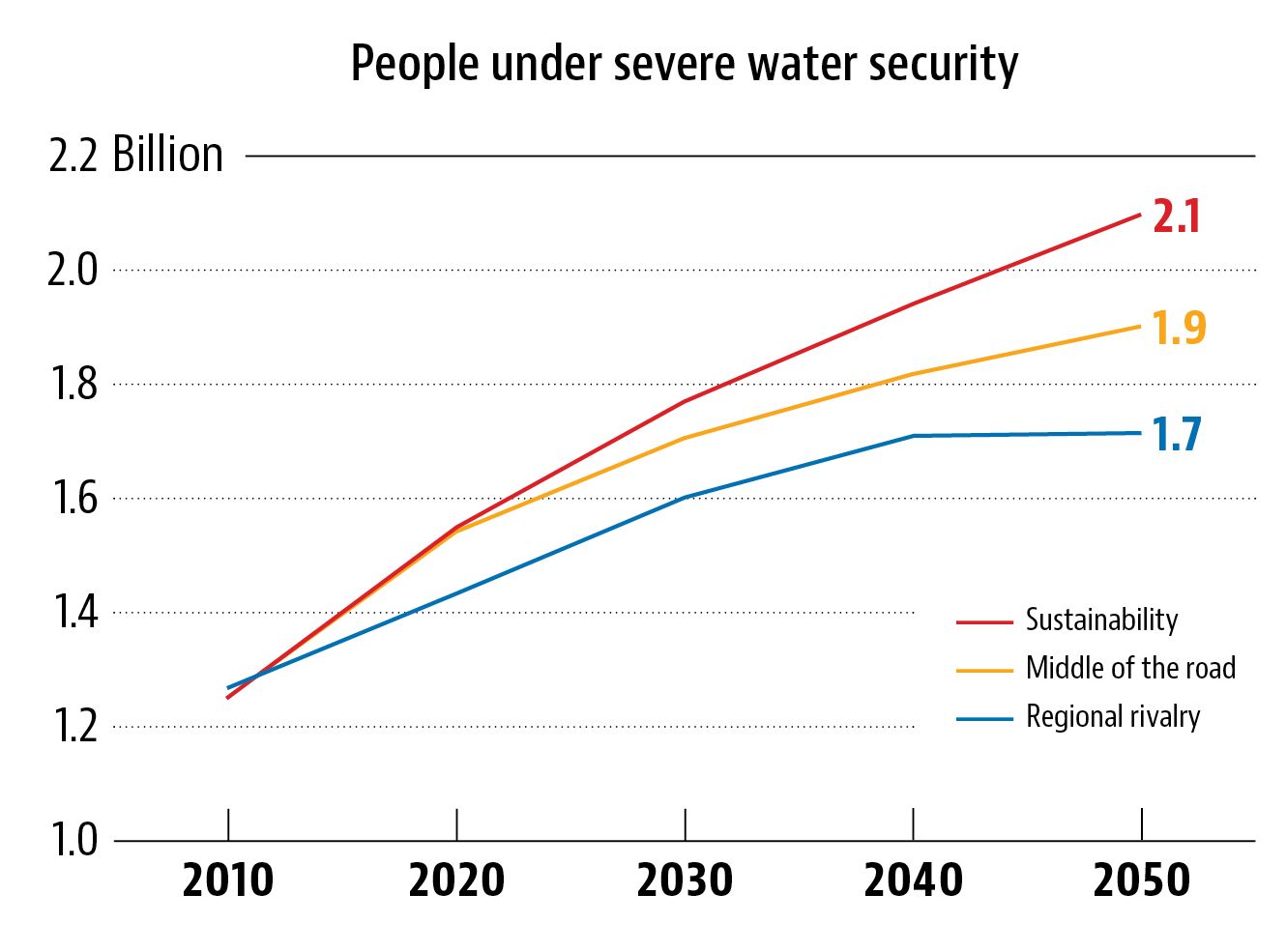Water security in Asia
The Asian Water Development Outlook report, published by the Asian Development Bank, provides an overview of the water security status of 48 countries of the Asian-Pacific regions. This critical report, which had substantial input from the IIASA Water Futures and Solutions Initiative, depicted possible Asian water futures, identified hotspots of water insecurity, and proposed solutions to cope with these threats.
To explore how water supply and demand will change in the decades to come, the IIASA Water Futures and Solutions Initiative developed a set of possible future scenarios for Asian-Pacific areas. These are based on the Shared Socioeconomic Pathways, which describe possible paths human societies could follow over the next century, along with the Representative Concentration Pathways, which are greenhouse gas concentration trajectories. These pathways were developed for the Intergovernmental Panel on Climate Change assessments and are used as the foundation for much of the world’s global change modeling.
For the Asian Water Development Outlook 2016 report, three scenarios were explored:
- The sustainability scenario
- The middle of the road scenario
- The regional rivalry scenario
For the sustainability scenario, barriers to achieving sustainability, mitigation, and adaptation are minimal, in the middle of the Road scenario they are intemediate, and for regional rivalry they are high.
Figure 1: Scenario dimension for Asian-Pacific water futures.
The scenarios incorporate the considerable changes to Asia’s population that are expected in the coming decades. Asia’s total population was around 3.8 billion in 2010, and will grow to between 4.3 and 5.1 billion by the 2050s, depending on the scenario used. GDP per capita will increase in all combinations of scenarios and regions, however, total GDP may decrease in some regions such as East Asia and countries with advanced economies, all of which have implications for water use and demand.
Three state‑of-the-art water models were used to calculate water demand for the agricultural, industrial, and domestic sectors, based on socioeconomic and climate changes. The researchers estimated that current Asian water demand (2,410 km3/year) would rise by about 30–40% to 3,170-3,460 km3/year in the 2050s under the three scenarios considered. At the regional scale, South Asia and East Asia remain the largest water users in the continent in all sectors until 2050, and significant rises in agricultural demand are also expected in Central and West Asia.
Figure 2: Total Asian-Pacific water demand projection
This study also assessed imbalance between water demand and supply, highlighting hotspots of water scarcity. Many countries in Asia, including, Afghanistan, Armenia, China, Pakistan, and Uzbekistan already experience pervasive water scarcity conditions. At present, almost all countries in central and West Asia, East Asia, South Asia, and parts of Southeast Asia have regions that suffer from severe water scarcity for at least one month every year.
Future projections indicate that the areas under severe water scarcity conditions in Asia will grow, especially in regions that are already hotspots for water scarcity, creating greater imbalances. Under all scenarios the number of people living in severely water scarce areas will increase from 1.2 billion to 1.7–2.1 billion, approximately 40% of Asia’s future population. The largest share of affected people will be mainly in South Asia, followed by East Asia.
Figure 3: Asian-Pacific future population living in severe water scarce areas
References
[1] Bunn S, Stewart-Koster B, Fischer G, Green P, & Wiberg D (2016). Key Dimension 4: Environmental Waste Security. In: Asian water development outlook 2016: Strengthening water security in Asia and the Pacific. Eds. Siddiqi, Y. & van Beek, E., pp. 21-64 Mandaluyong City, Philippines: Asian Development Bank.
[2] Burek P, Satoh Y, Fischer G, Kahil MT, Scherzer A, Tramberend S, Nava LF, Wada Y, et al. (2016) Water Futures and Solution – Fast Track Initiative (Final Report). IIASA Working Paper. WP-16-006, IIASA, Laxenburg, Austria.
[3] Satoh Y, Kahil T, Byers E, Burek P, Fischer G, Tramberend S, Flörke M, Eisner S, et al. (2017). Multi-model and multi-scenario assessments of Asian water futures: the Water Futures and Solutions (WFaS) initiative. Earth’s future. Accepted
[4] Wada Y, Flörke M, Hanasaki N, Eisner S, Fischer G, Tramberend S, Satoh Y, van Vliet M, et al. (2016). Modeling global water use for the 21st century: Water Futures and Solutions (WFaS) initiative and its approaches. Geoscientific Model Development 9: 175-222.
Collaborators
Yasmin Siddiqi, Asian Development Bank



